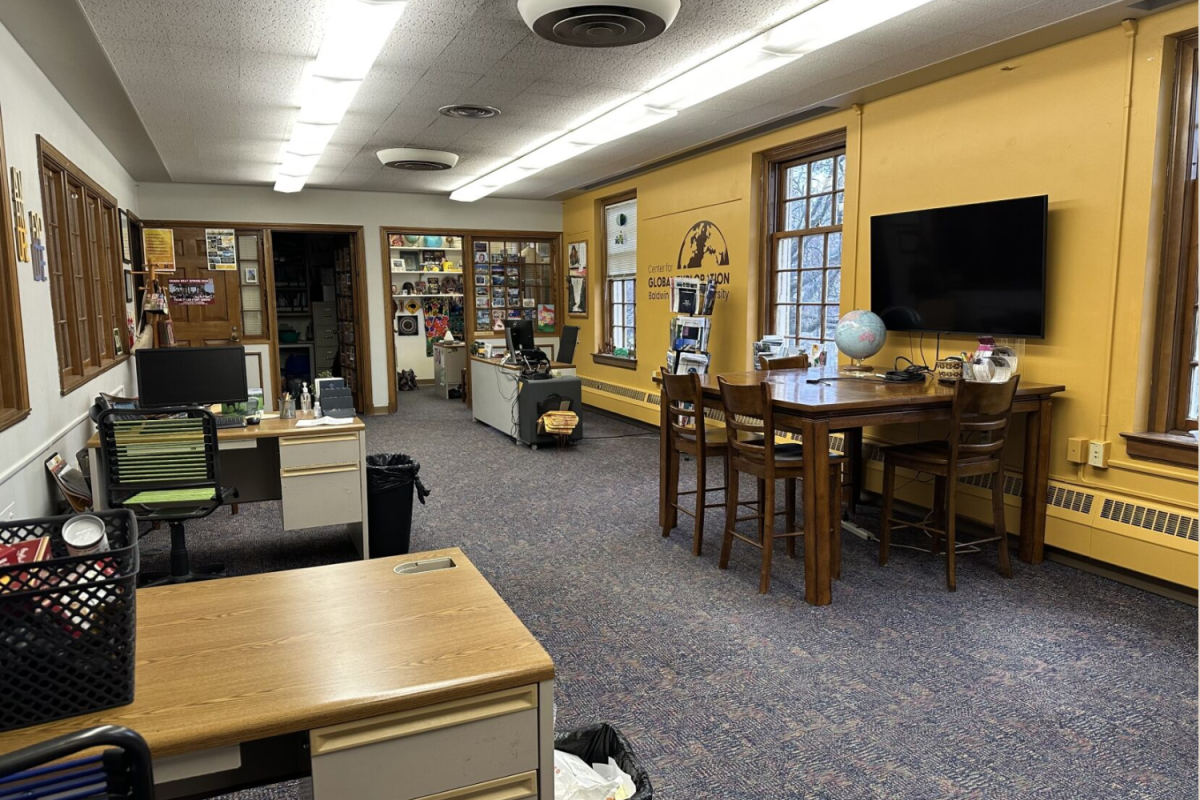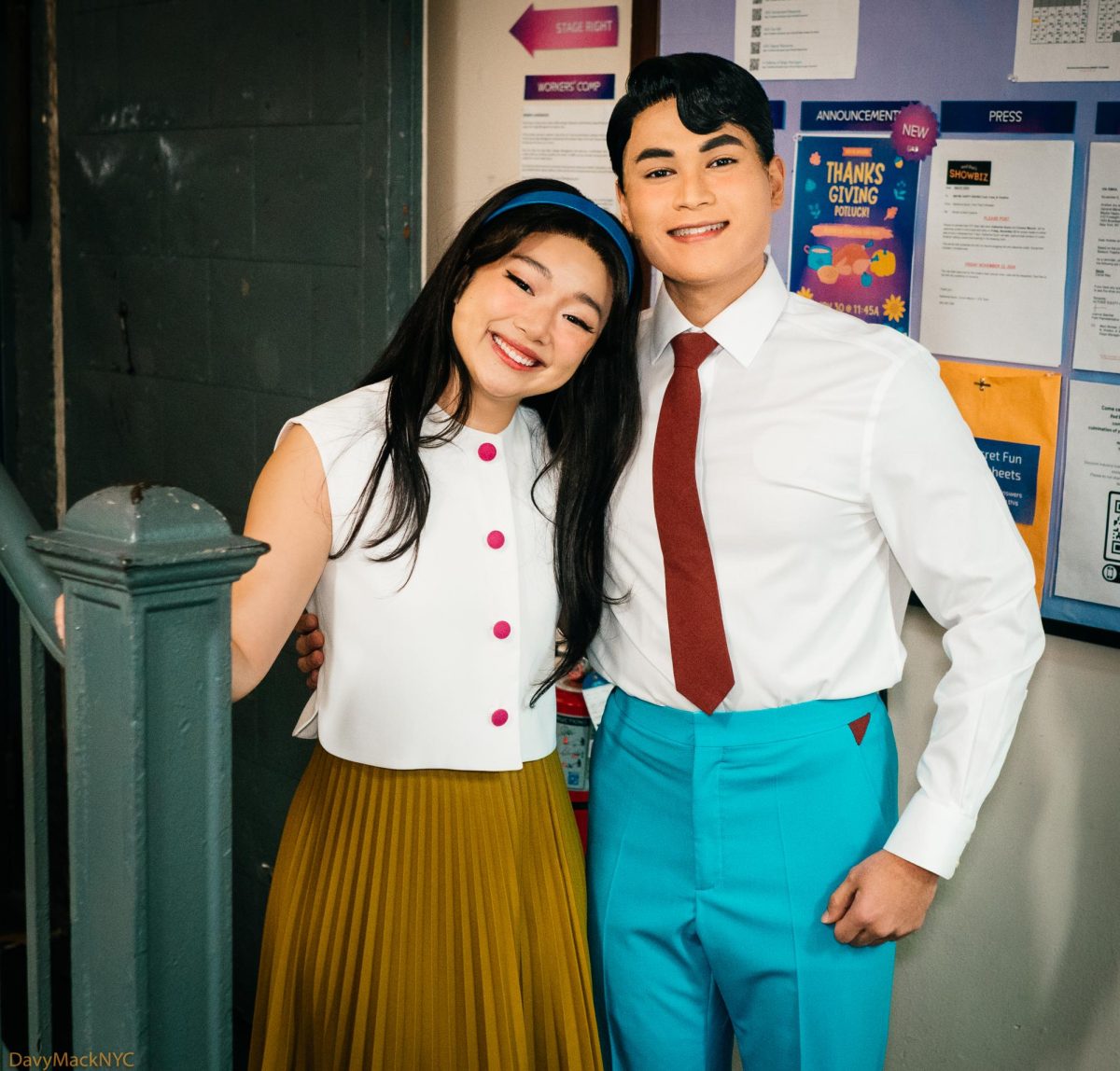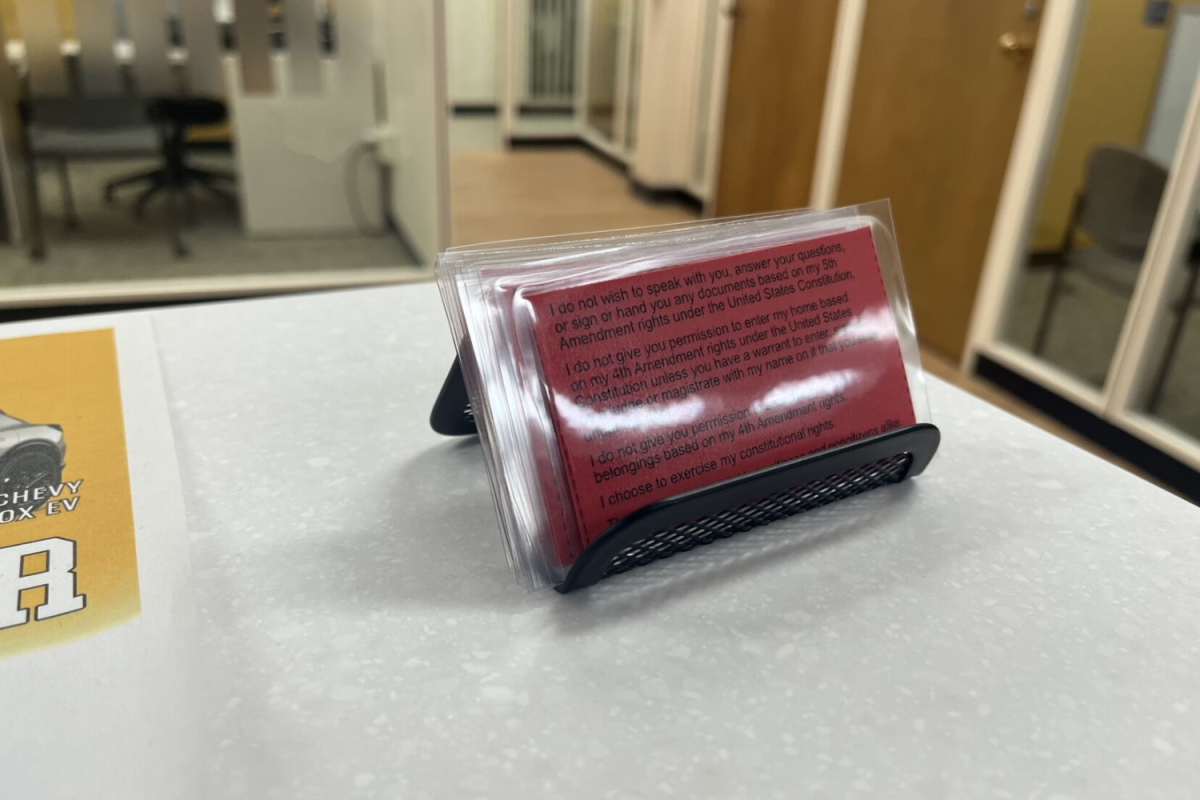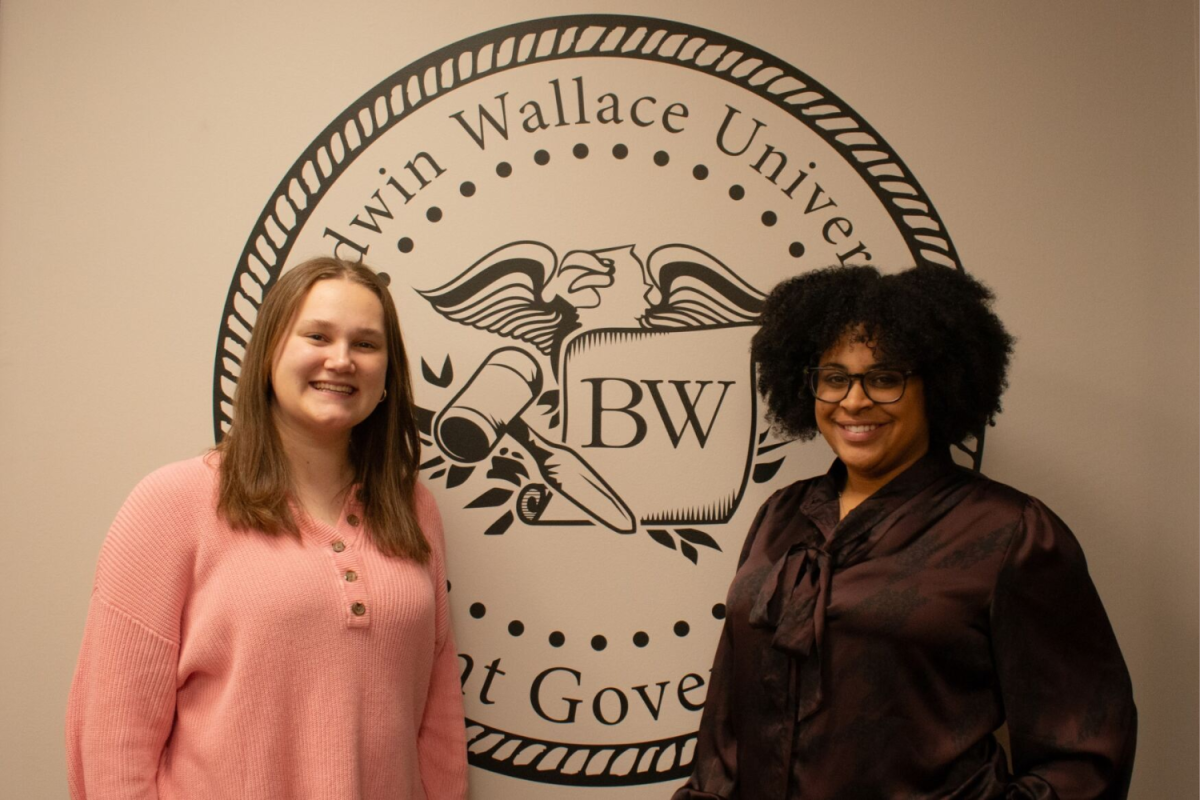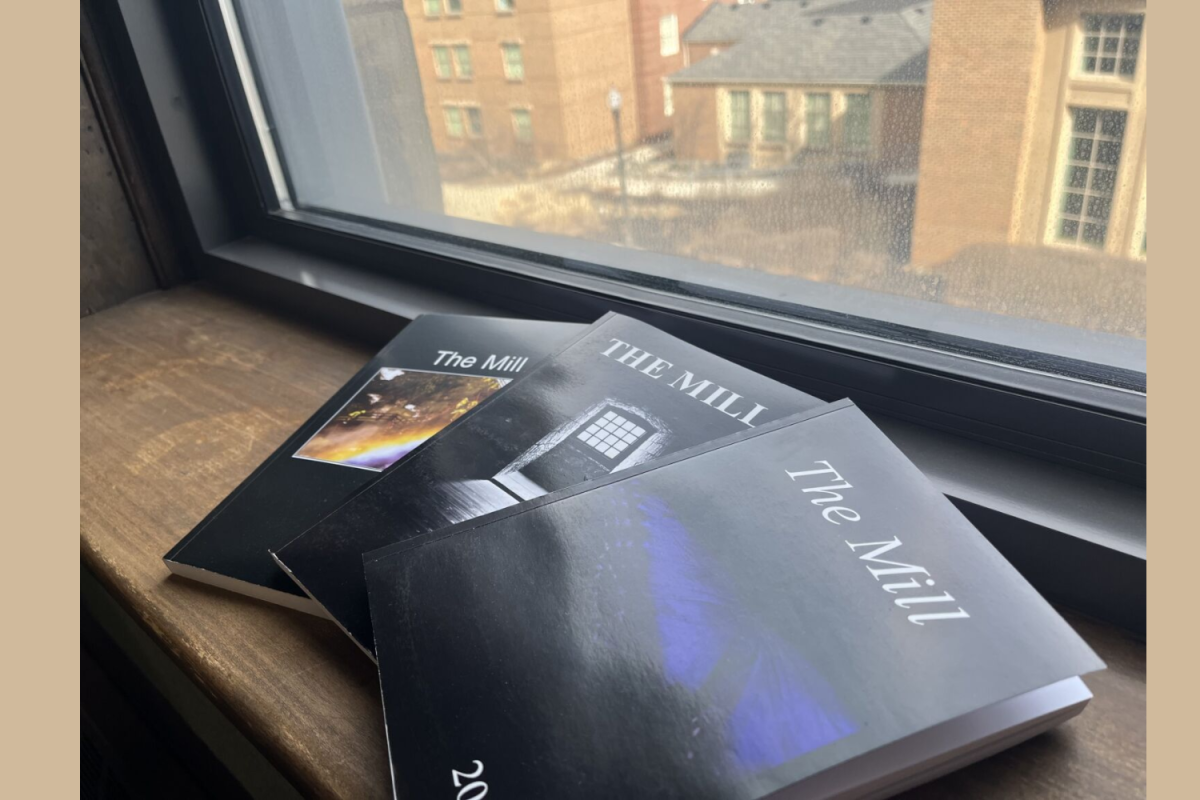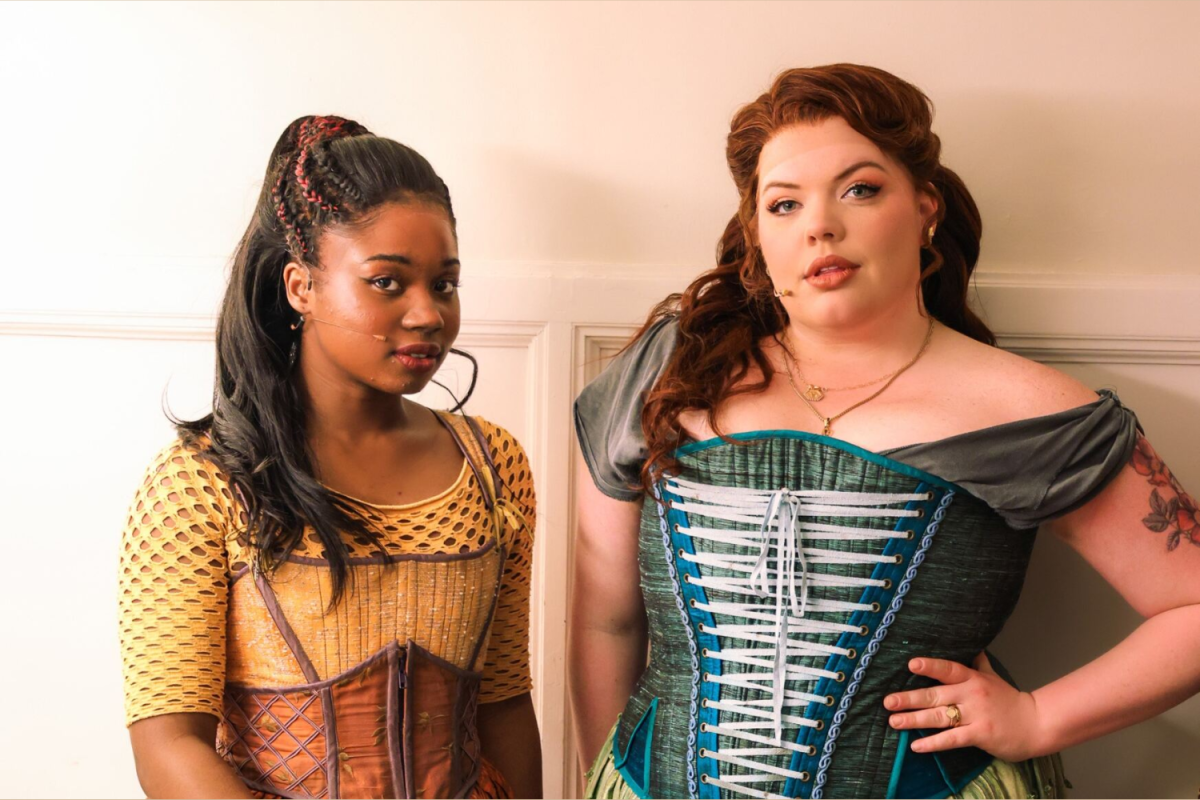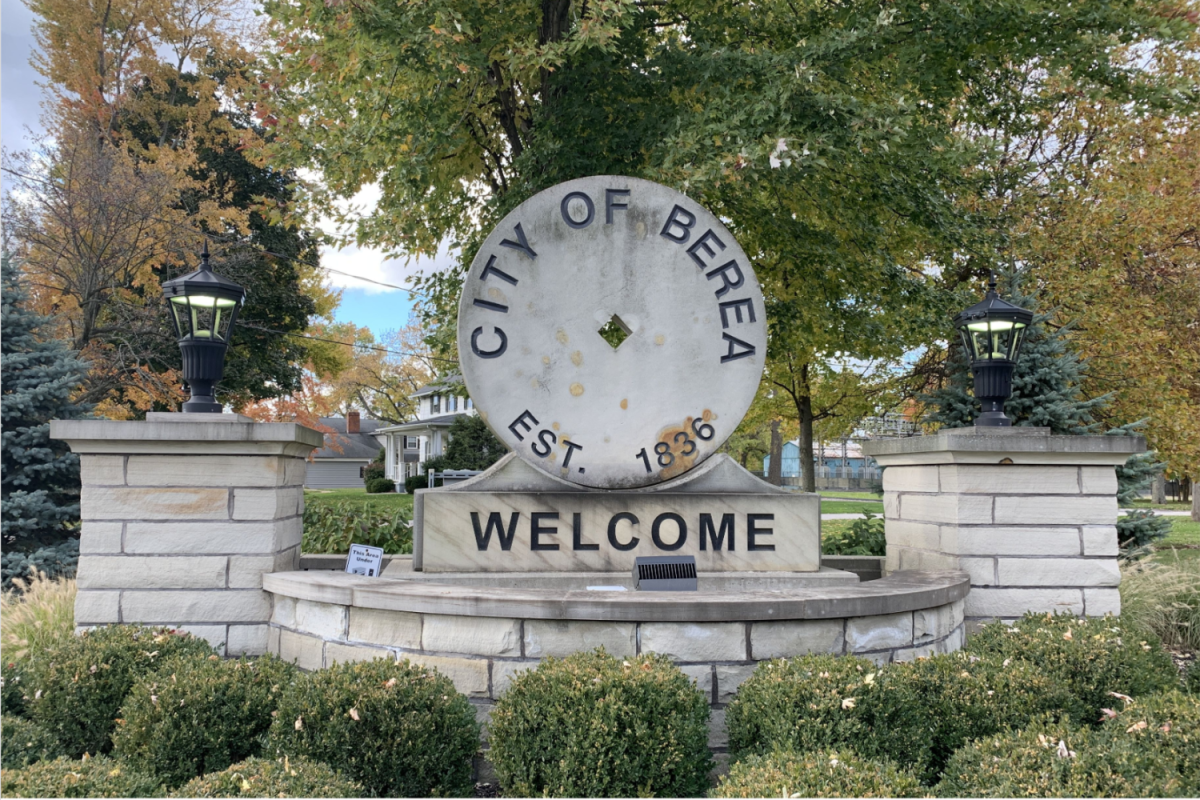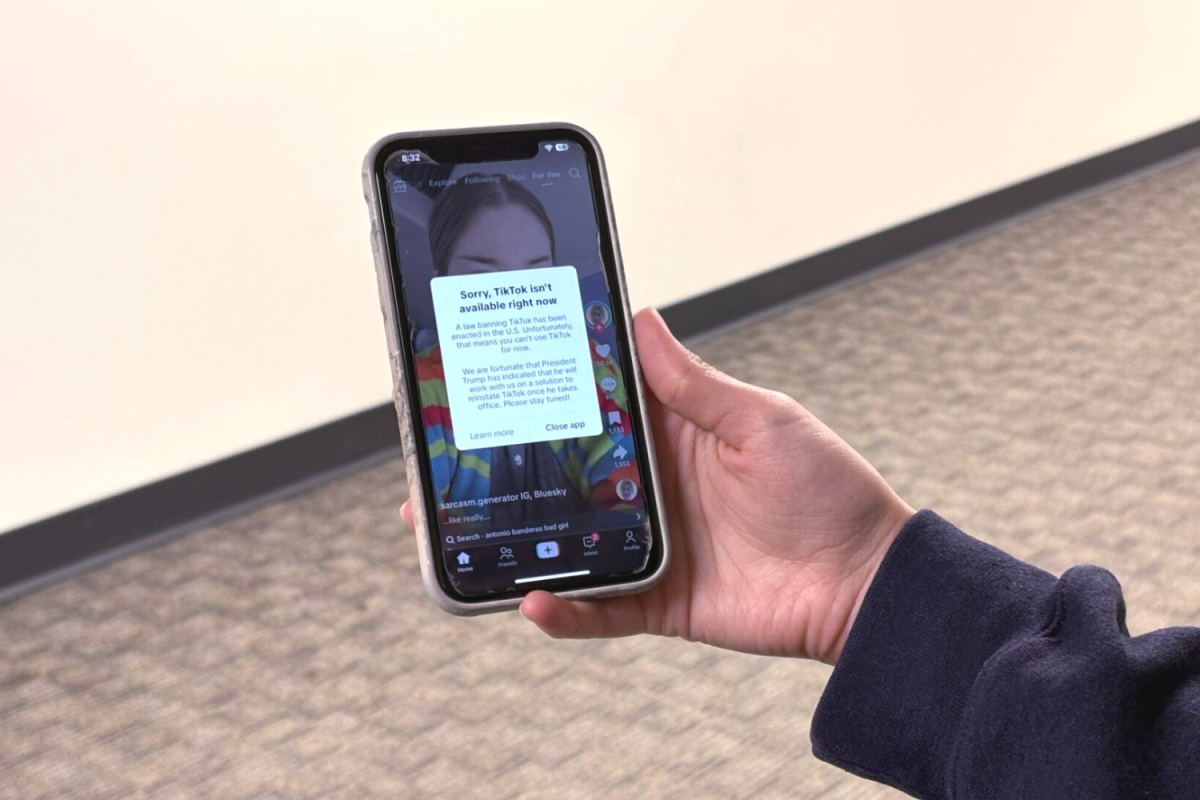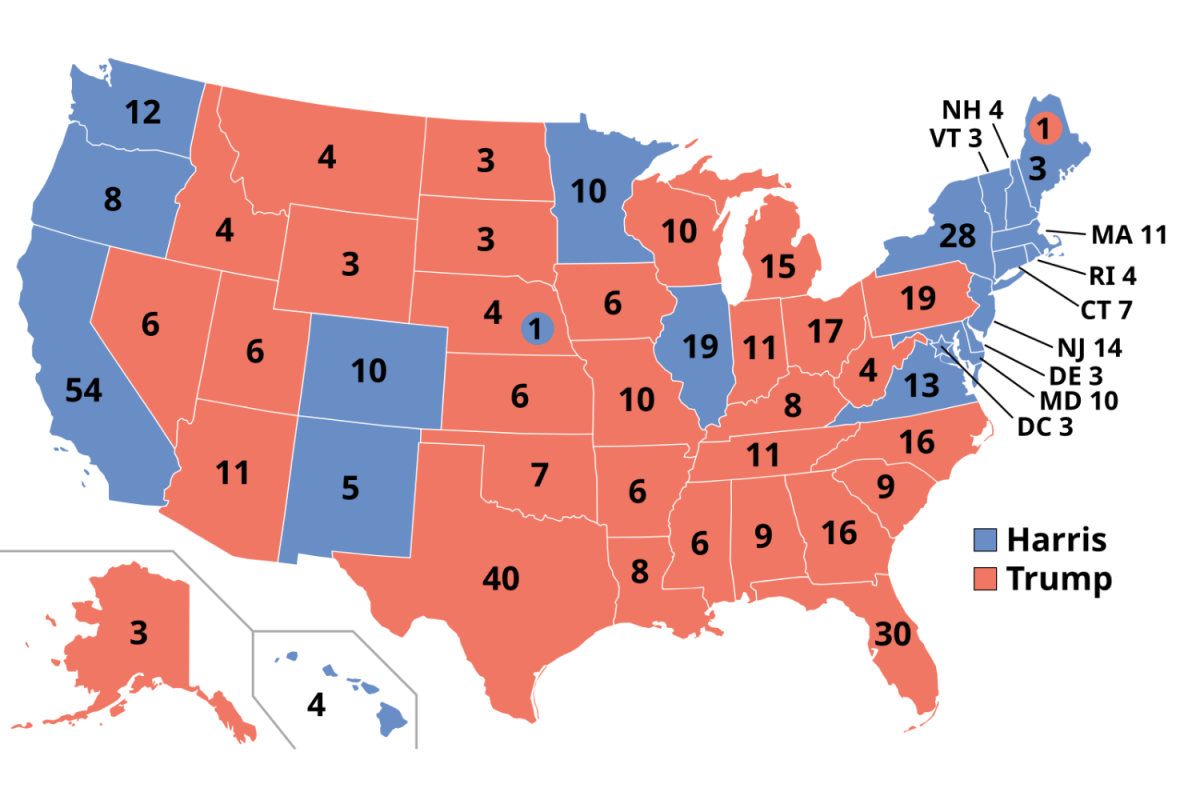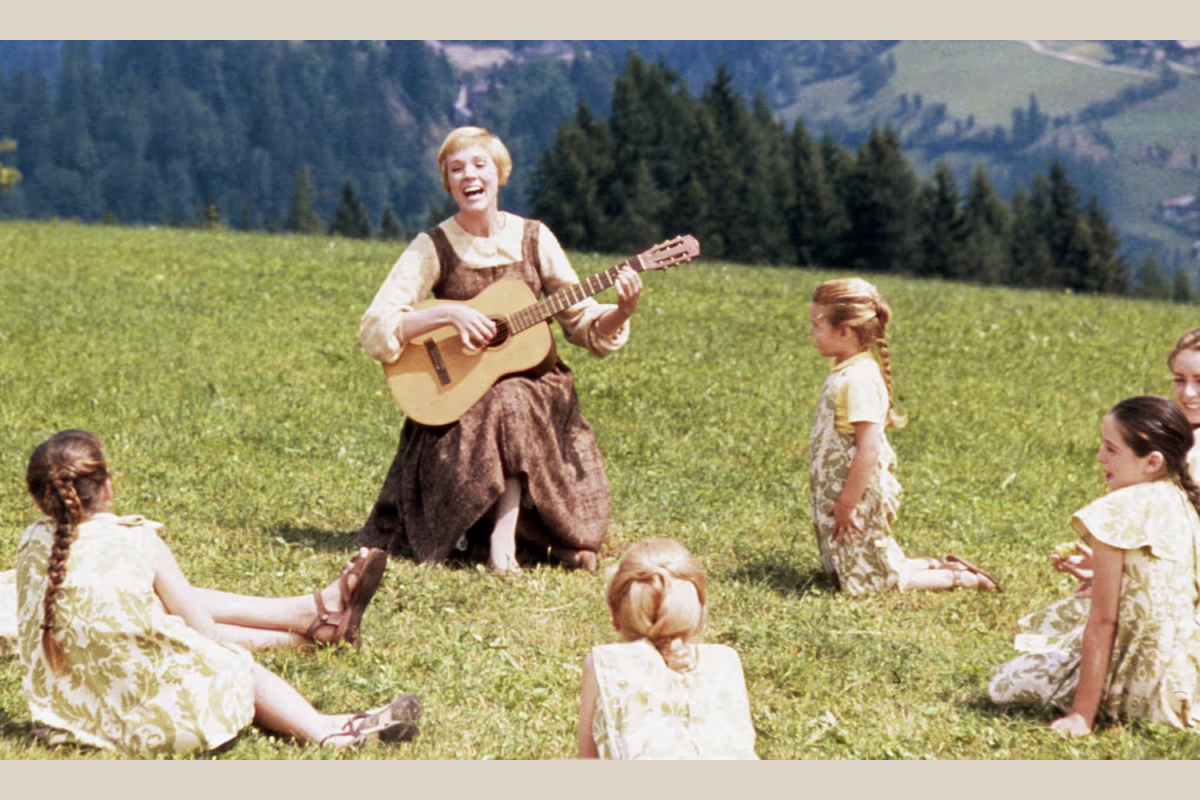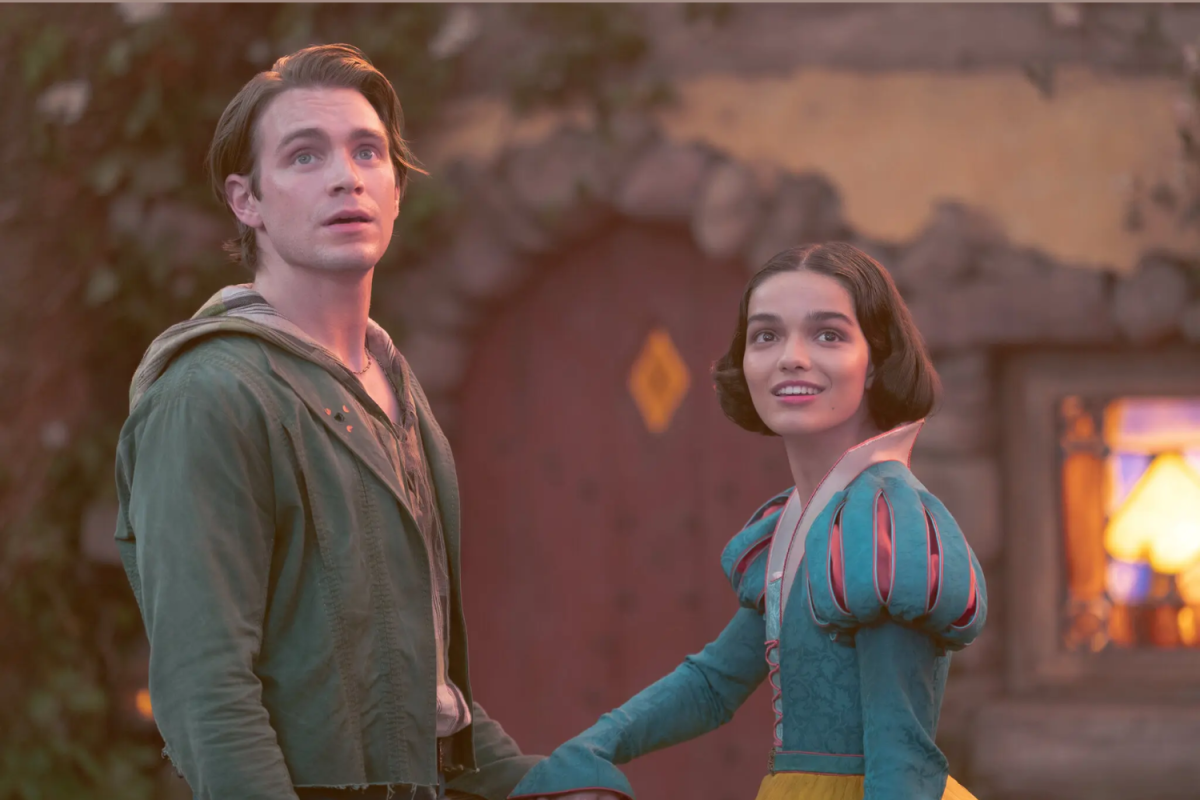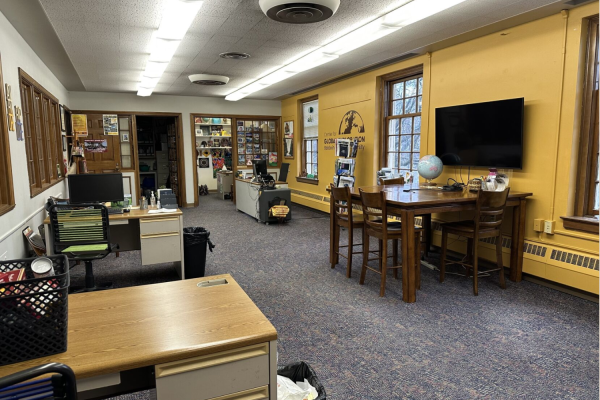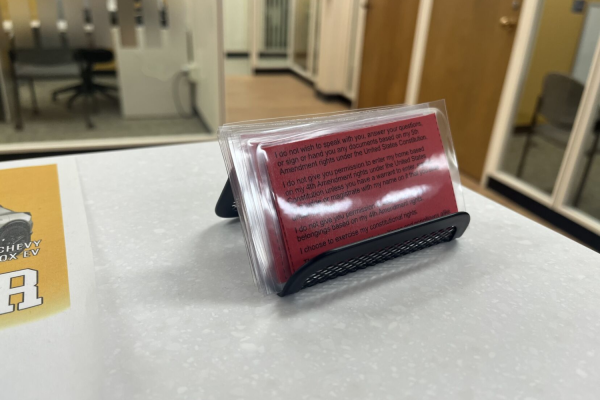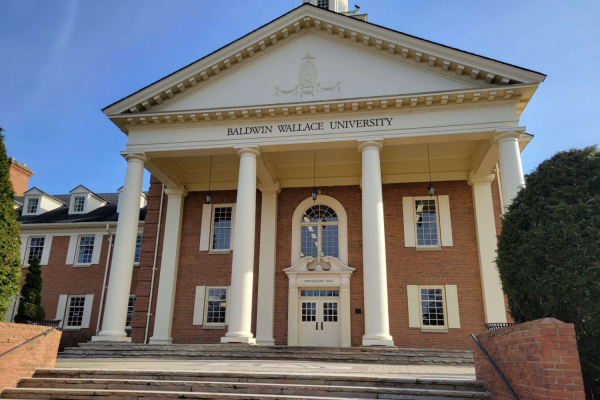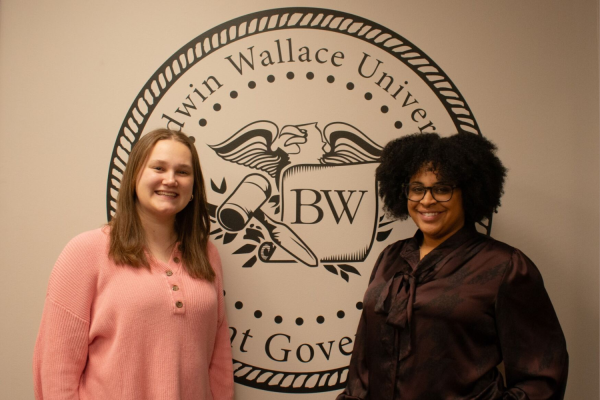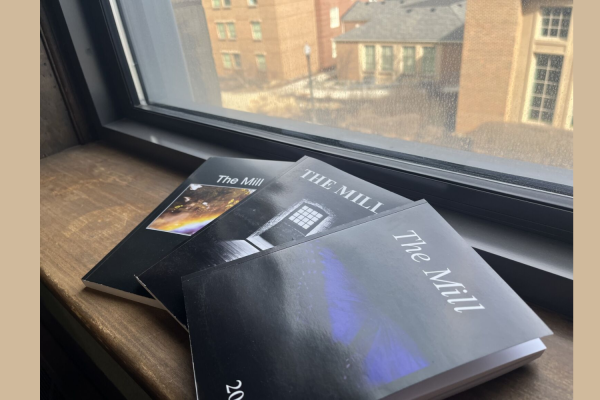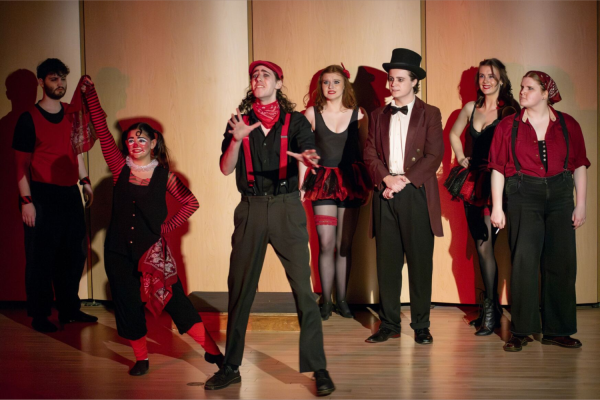University libraries’ rare book collections provide valuable academic resource
The Ritter Library and the Riemenschneider Bach Institute in Baldwin Wallace’s Conservatory of Music house several historical and unique texts that are available for student research.
The Dr. Paul O. and Josephine S. Mayer Rare Book Room is housed on the second floor of the Ritter Library. It contains a main room lined with bookshelves, a back room for extra large books and a vault for books that date back prior to the 1800s. Items from the rare book room are sometimes brought to classes or put on display in what Ritter Library director Charles Vesei called “rare book petting zoos.”
Some of the most notable items in this collection include a Vulgate Bible from around the years 1220–1235 with handwritten early Gothic font, a leaf from “The Tragedie of Hamlet” in Shakespeare’s First Folio, a ships letter signed by both Thomas Jefferson and James Madison, an original etching and line engraving by William Blake, a full collection of first edition installments of Charles Dickens’s “Bleak House,” a letter signed by Albert Einstein and a book signed by Martin Luther King Jr.
The room was founded when BW alumnus Paul O. Mayer donated his collection of Limited Editions Club in 1969, according to John Curtis, head of special collections at Ritter Library. The first University librarian for rare books and special collections was W. Alwyn Ashburn, who oversaw the dedication of the rare book room in 1976. When Ashburn left BW in the 1980s, however, the rare book vault remained locked for three decades until 2012.
“I was the one who prompted the new director to bring [the rare book room] back to life,” Curtis said.
Once the vault was unlocked, Curtis found sculptures by Pierre-Auguste Renoir and Frederick Gottwald, who was influential in creating the Cleveland School of Art. Curtis kept the art that directly pertained to the collection, such as William Blake’s etching of “Chaucer’s Canterbury Pilgrims” but donated the rest.
For music students, the R.B.I. is located on the first floor of the Boesel Musical Arts building. The R.B.I. also contains a vault where special materials are kept, said Paul Cary, the conservatory librarian responsible for running both Jones Music Library and the R.B.I.
The R.B.I. has a similar origin story as the collection was based on Albert and Selma Riemenschneider’s vast collection of Bach scores and materials that was donated after Albert’s death. Riemenschneider was the founder of the Conservatory, and he and his Selma founded BW’s Bach Festival, the oldest collegiate Bach festival in the country, together in 1933. The collection has since grown through donations and occasional purchases of historic material.
“I think that the R.B.I. really helps foster student engagement with scholarship and with the way that art is produced and disseminated,” Cary said.
Some of the most notable items in the R.B.I. collection are some handwritten parts of a cantata used in a performance in Leipzig circa 1729 with some parts written in Johann Sebastian Bach’s own hand, a copy of Johannes Brahms’ German Requiem with some of the composer’s own markings, a signed copy of Claude Debussy’s “Afternoon of a Fawn” and a collection of Bach organ works with markings by musical icons Brahms and Robert Schumann. The collection also has many first editions of pieces by Beethoven, Schubert, Brahms and other Romantic compositions.
Cary said that one of his favorite pieces in the collection is a set of vocal part books for motets that were ornately printed in Venice in 1568.
These rare items and others can be made available to students for research projects. The Mayer Rare Book Room Scholar Award offers students a scholarship in which students conduct approximately 75 to 100 hours of research in one semester and present their findings at the end of their research period. Students of any major or minor can apply and can pick from whatever items from the collection they wish to study.
The Conservatory has the R.B.I. Scholars program, which awards up to five students $1,000 annually to complete mentored research involving items from R.B.I. collections. Some student research can potentially be published in “BACH: Journal of the Riemenschneider Institute,” a journal edited by Conservatory professor Christina Fuhrmann.
Cary said he and his staff work to ensure that all Conservatory students “have some sort of experience with the R.B.I.” during their studies. He also does class visits where students can interact with the R.B.I.’s materials.
Scholars from outside of BW often conduct research with these collections as well. The R.B.I. has recently hosted independent scholars from institutions such as Emory University and Queen’s University of Belfast, Ireland.
Curtis said that Carol Lynn Ward-Bamford, a musical instrument curator for the Library of Congress who is writing a book on renowned physicist and BW alumnus Dayton C. Miller, visited the library to do archival research in January. Miller was also a flautist and a prolific collector of rare flutes.
Nine months after her BW visit, Ward-Bamford helped rapper and pop star Lizzo make national headlines when she handed the Grammy-winner a special item from Miller’s collection: the priceless crystal flute owned by President James Madison.
The Exponent is looking for financial contributions to support our staff and our newsroom in producing high-quality, well-reported and accurate journalism. Thank you for taking the time to consider supporting our student journalists.

